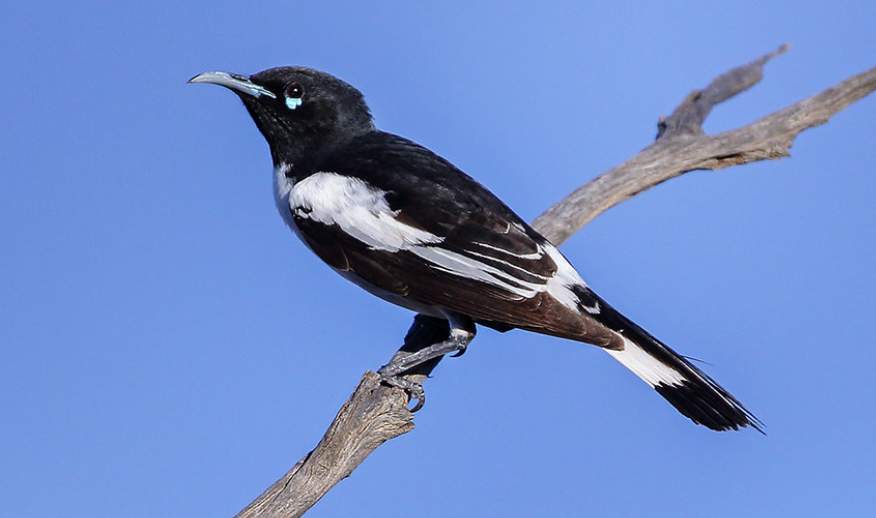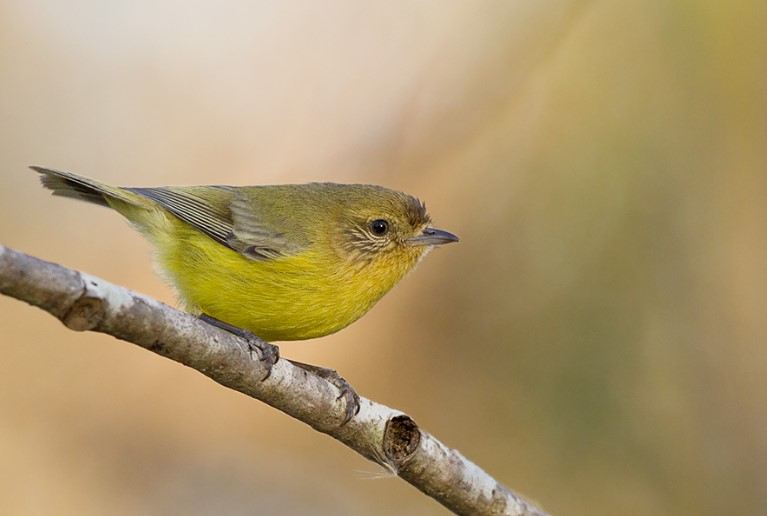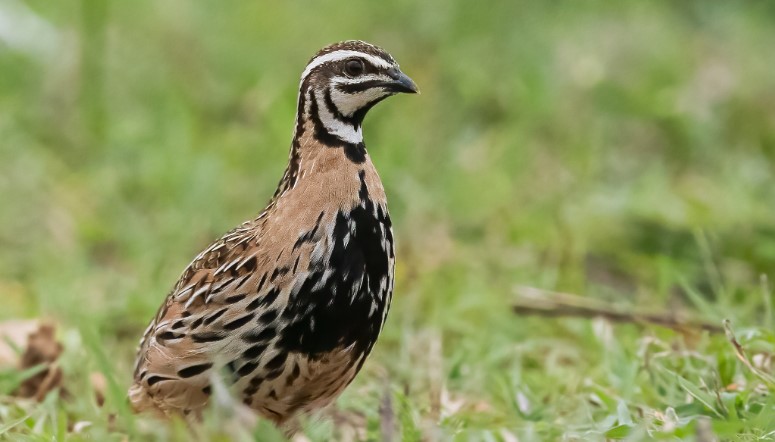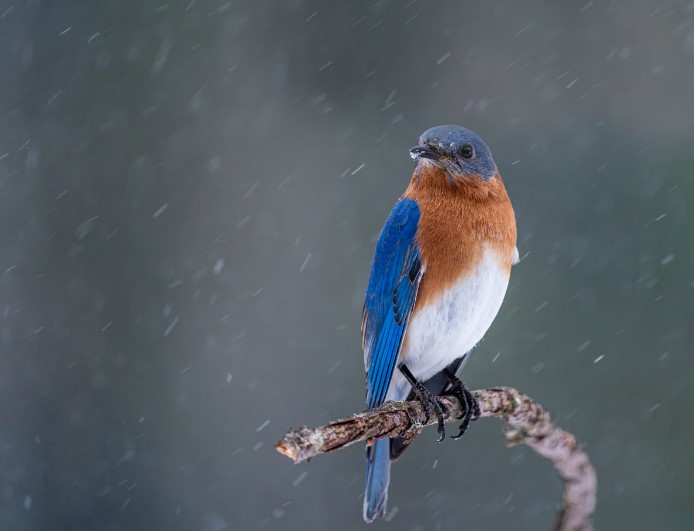The pied Honeyeater (Certhionyx variegatus) is a nomadic black honeyeater depending also on nectar from eremophila bushes. It is the sole species of the genus Certhionyx and belongs to the family Meliphagidae of honeyeaters. The pied honeyeater is classified as a summer drinker in the Australian desert, where Meliphagidae is highly dependent on free water.
A single bird or a pair of birds is often seen. Black honeyeaters, crimson chats, black-faced woodswallows, and masked woodswallows have been observed flying with flocks during certain seasons. In addition, pied honeyeaters have been observed feeding with yellow-throated miners, greenies, and black honeyeaters.

Throughout Australia’s arid zone, Pied Honeyeaters follow erratic flowering patterns in small groups of two to six birds. During local flushes, many groups of birds may breed within a small area; as blossoming declines, they may disperse and not return for several seasons.
Movements do not follow a seasonal pattern. Despite its erratic movements, little is known about the social organization or behavior of this species, in part because of its nervous nature, constant movement, shyness, quick wing speed, and timidity. Pied Honeyeaters have slender, pointed wings with a reduced outermost primary, if not vestigial, like Black Honeyeaters, and fly long distances in long, low, smooth movements. Although Pied Honeyeaters feed primarily on eremophilas with their curved bills, they are not restricted to them.
The birds also take nectar from shrubs of Brachysema, fruit from chenopods, and insects, which they often catch in short hawking sallies. Breeding males mark territory with a spectacular song-flight, climbing vertically and diving straight back, wings closed, tail fanned, singing as they drop. Both sexes build and incubate the nest within two or three days. The Pied Honeyeater measures 160-180 mm in length; however, the male bird is larger. Yellow-throated miners and white-plumed honeyeaters harass pied honeyeaters in tree canopies.
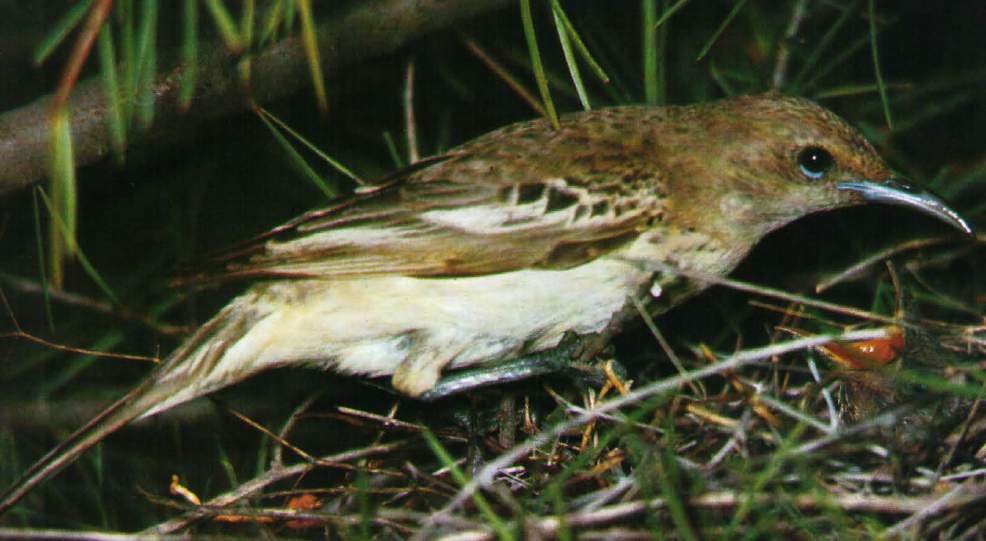
A male’s head, throat, sides of the breast, back, wings, and inner webs of his upper tail coverts are all black. Additionally, two central tail feathers and the tip of the tail are black. White wing coverts, secondaries, rump, outer webs of upper tail coverts, underparts, and remaining tail feathers. There is a small pale blue wattle under the eye. Eyes are brown. The bill is blue-grey in color. The feet are black. The upper parts of female birds are mid-brown and faintly mottled darker; the wing coverts are off-white; the brow is paler; and the underparts are white, mottled, and washed brown on the throat and breast. Grey is the color of the feet.
This species is also known as the black and white honeyeater or western pied honeyeater. The Pied Honeyeater is typically a silent bird, but its song-flight is accompanied by a piercing, drawn-out whistle called te-titee-tee-tee.
During the months of September and February, nesting and breeding take place. This nest is made from twigs, grass, and cobwebs; it is supported by a fork in a low bush. Nesting has taken place in a wattle by the female Pied Honeyeater. Both sexes build the nest and incubate the eggs. Disturbed females fall to the ground and pretend to be injured to attract attention.
The Pied Honeyeater lays 2 to 4 eggs; they are buff-grey, clearly spotted and blotched dusky. They are oval in shape, approximately 22mm x 16mm. Incubation lasts about 12-13 days for both sexes. It takes about ten days for the young to fledge. In all arid zones, the Pied Honeyeater can be found in scrubs such as Acacia, mallees, and spinifex. There are no races in this nomadic bird.
Read More – Yellow-throated Honeyeater (Nesoptilotis flavicollis)
